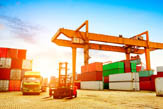Understanding Sea Freight Logistics: A Comprehensive Guide
Overview of Sea Freight Logistics
Sea freight logistics is a vital component of global trade, enabling the transportation of goods across the world via ships. It plays a crucial role in connecting manufacturers, suppliers, and consumers, ensuring efficient and timely delivery of products. With advancements in technology and a growing emphasis on sustainability, sea freight logistics continues to evolve, offering innovative solutions for businesses worldwide.
Key Components of Sea Freight Logistics
The process of sea freight logistics involves several essential steps, including shipping container loading, transportation to the destination port, customs clearance, and unloading at the final destination. Companies involved in this process include shipping companies, freight forwarders, customs clearance services, and logistics providers. Proper coordination and documentation are critical to ensure smooth operations and avoid delays.
Advantages of Sea Freight Logistics
One of the primary advantages of sea freight logistics is its cost-effectiveness. Compared to air freight, sea freight is generally more affordable, especially for bulky or oversized items. Additionally, sea freight offers a reliable and consistent delivery time, making it a preferred choice for businesses with tight schedules. It also provides a broader coverage, allowing goods to reach destinations in remote or hard-to-reach areas.
Challenges in Sea Freight Logistics
Despite its benefits, sea freight logistics is not without challenges. Issues such as fuel costs, environmental regulations, and port congestion can impact the efficiency of the process. Weather conditions, such as storms or rough seas, can also disrupt shipping schedules. To mitigate these challenges, businesses often collaborate with logistics providers to optimize routes and reduce costs.
Future Trends in Sea Freight Logistics
The future of sea freight logistics is expected to be shaped by technological advancements, such as automation and artificial intelligence, which can enhance operational efficiency. There is also a growing emphasis on sustainability, with companies exploring greener shipping practices, such as the use of electric vehicles and reducing carbon emissions. These trends will further strengthen the role of sea freight logistics in the global supply chain.
Conclusion
In conclusion, sea freight logistics is a cornerstone of global trade, offering a reliable and efficient means of transporting goods worldwide. By understanding the key components, advantages, and challenges associated with this process, businesses can optimize their operations and ensure seamless supply chain management. As the industry continues to evolve, embracing these trends will be essential for maintaining a competitive edge in the global market.
